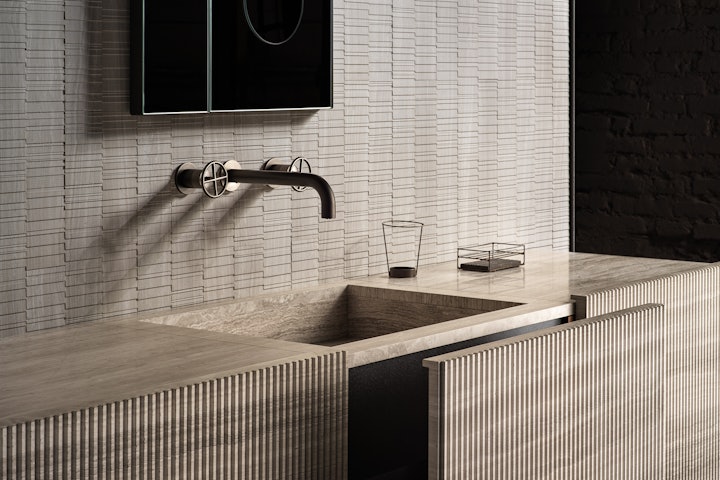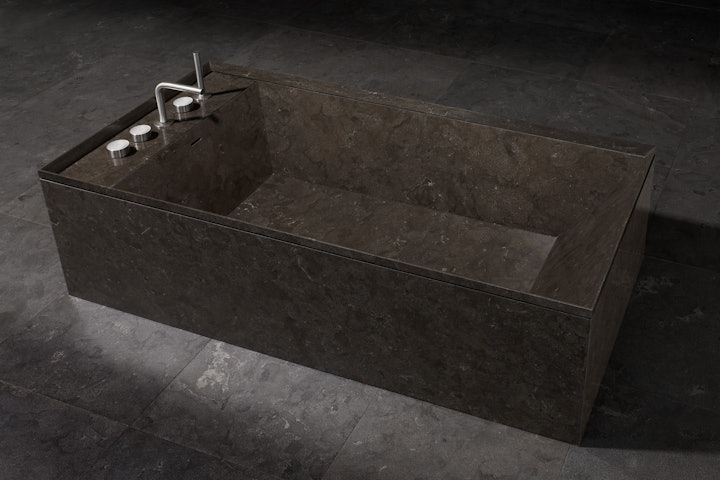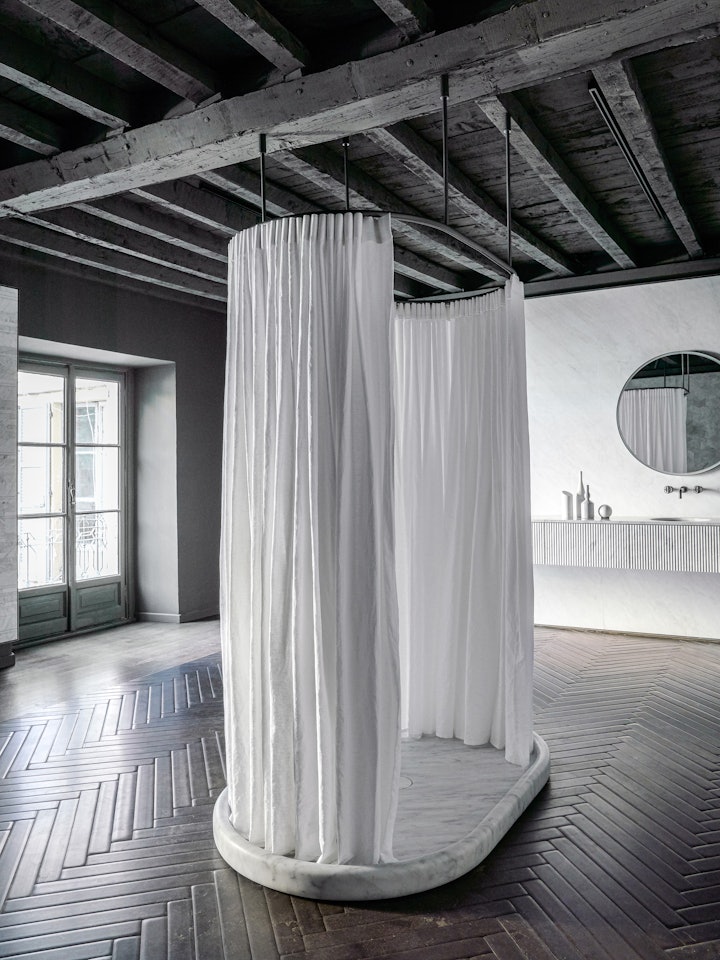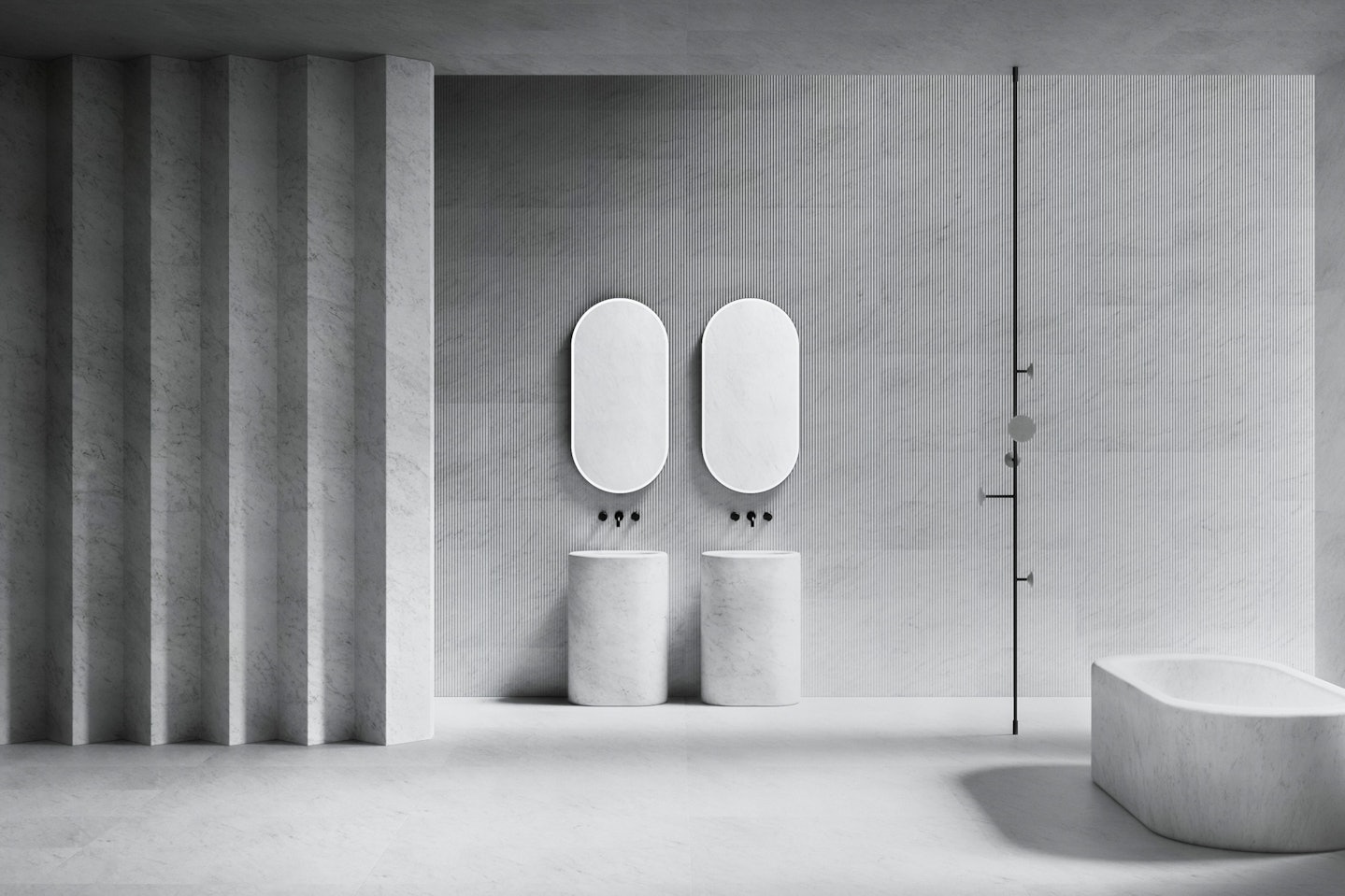The contemporary bathroom
03.2022
For Elisa Ossino, the bathroom becomes almost reverential
The only domestic space designed, primarily, to be used alone, the bathroom is a unique place of calm and contemplation. Private by necessity, the bathroom offers more than just a room equipped to perform the daily rituals through which we are renewed and restored; closed off from the world, it is a place to pause and reflect, to escape from the maelstrom of modern life.
And yet in contemporary design the bathroom can often be overlooked. Excluded from photo galleries of the latest exciting projects published on architecture websites, and rarely exhibited as examples of pioneering new ideas at design fairs and festivals, the bathroom – limited by the necessary inclusion of a sink, toilet, shower and bath – could be seen as a dead-end for design, an unfortunate architectural necessity.

But it has not always been this way. Le Corbusier – in his Manuel de l’habitation, published in 1923 – called for a bathroom, walled with windows, in place of the drawing room, celebrating rather than hiding the use of the space. And a few years later, in response to the high cost and inefficiency of bathrooms, Buckminster Fuller would propose a room formed entirely from four sections of stamped sheet metal that combined the bathroom fixtures into one unit. But while these experimental forms challenged existing archetypes, they ultimately failed to conceive of a system that, in practice, worked better than a private, spacious room that is pleasant to spend time in, which happened to also be a place for the acts and ablutions that so preoccupied 20th century designers.
Le Corbusier’s concept for a bathroom separated from the bedroom by a half-height wall would no longer scandalise design critics and newspaper columnists, as it had done in 1927, and designers do not need to accommodate or confront a prudishness about our bodily functions. Instead, today the bathroom is defined by what it can offer in addition to the purely functional; by how it can offer quiet away from the noise of everyday life, an ever more vital role in an era of constant connectivity – at the very least it’s difficult to use your phone in the shower.

Our approach to the bathroom is not to break the wheel but to innovate quietly, collaborating with some of the most important designers working today on products that help to create this atmosphere of calm and reflection: Rodolfo Dordoni’s elegant, geometric Onsen bathtub, for example, which evokes the culture of Japanese hot springs, or the rhythmic harmony of the Adda wall-mounted basin designed by David Lopez Quincoces, pairing natural stone with wood to introduce a reassuring nostalgia to a contemporary design.
For Elisa Ossino, the bathroom becomes almost reverential. The spiritual simplicity of her recent Balnea collection is underpinned by the gentle dynamic contrast of weight, the pleated linen shower curtains set opposite the vast monolithic bathtub, the freestanding wash basins with modernist clothes hangers. The product of a focused research into Bianco Carrara marble, Ossino’s expressive use of natural stone enhances the potential of the bathroom for reflection.

Through foregrounding the material’s ancient memory, of the immense pressures that formed it, as recorded in its unique veining and colouration, we are reminded to pause and consider life within a broader, less immediate, context.
